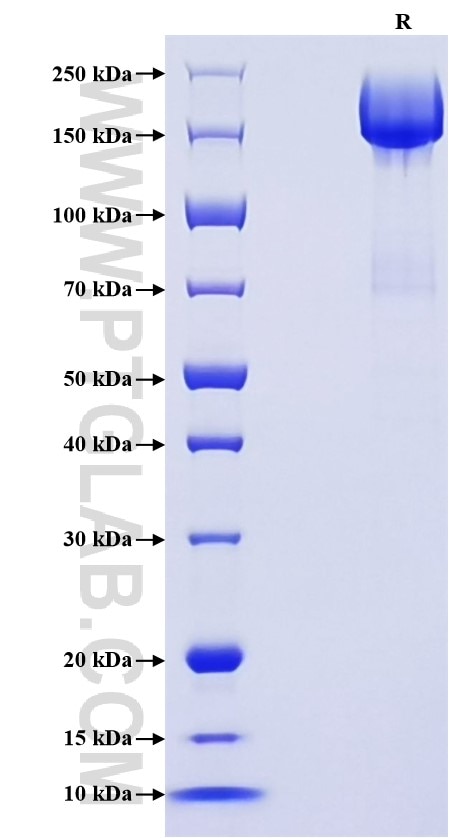Recombinant Mouse L1cam protein (rFc Tag)
Species
Mouse
Purity
>90 %, SDS-PAGE
Tag
rFc Tag
Activity
not tested
Cat no : Eg3022
Validation Data Gallery
Product Information
| Purity | >90 %, SDS-PAGE |
| Endotoxin | <0.1 EU/μg protein, LAL method |
| Activity |
Not tested |
| Expression | HEK293-derived Mouse L1cam protein Ile20-Glu1123 (Accession# P11627) with a rabbit IgG Fc tag at the C-terminus. |
| GeneID | 16728 |
| Accession | P11627 |
| PredictedSize | 150.1 kDa |
| SDS-PAGE | 140-250 kDa, reducing (R) conditions |
| Formulation | Lyophilized from 0.22 μm filtered solution in PBS, pH 7.4. Normally 5% trehalose and 5% mannitol are added as protectants before lyophilization. |
| Reconstitution | Briefly centrifuge the tube before opening. Reconstitute at 0.1-0.5 mg/mL in sterile water. |
| Storage Conditions |
It is recommended that the protein be aliquoted for optimal storage. Avoid repeated freeze-thaw cycles.
|
| Shipping | The product is shipped at ambient temperature. Upon receipt, store it immediately at the recommended temperature. |
Background
L1cam (the L1 cell adhesion molecule), is the prototype member of the L1-family of closely related neural adhesion molecules. L1cam is a 200–220 kDa transmembrane glycoprotein of the immunoglobulin (Ig) superfamily composed of six Ig-like domains and five fibronectin type III repeats followed by a transmembrane region and a highly conserved cytoplasmic tail. L1cam plays an essential role in the development of the nervous system but it is also highly relevant for the progression of human tumors. L1cam is not expressed in most normal tissues during homeostasis, including in rapidly proliferating tissues such as the intestinal epithelium.
References:
1. Doberstein K, et al. (2015). Mar 1;136(5):E326-39. 2. Kiefel H, et al. (2012). Cell Adh Migr. Jul-Aug;6(4):374-384. 3. Ganesh K, et al. (2020). Nat Cancer. 2020 Jan;1(1):28-45.
